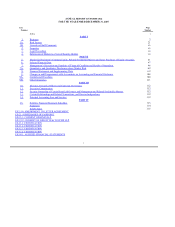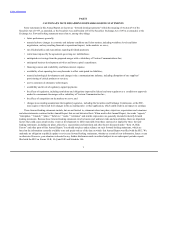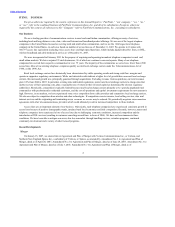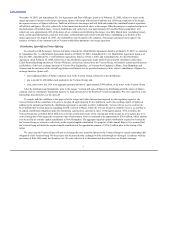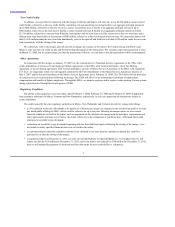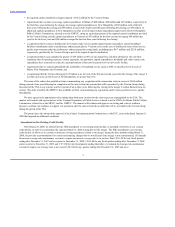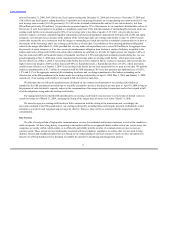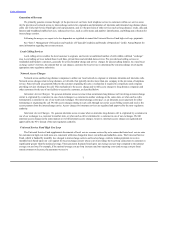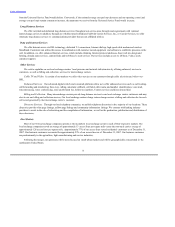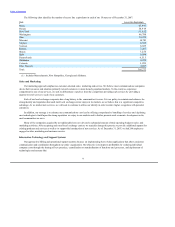FairPoint Communications 2007 Annual Report Download - page 12
Download and view the complete annual report
Please find page 12 of the 2007 FairPoint Communications annual report below. You can navigate through the pages in the report by either clicking on the pages listed below, or by using the keyword search tool below to find specific information within the annual report.
Table of Contents
provide for greater efficiencies and profitability. As of December 31, 2007, all of our operating companies had converted to a single
outsourced billing platform.
Our rural local exchange carrier networks consist of central office hosts and remote sites, all with advanced digital switches
(primarily manufactured by Nortel and Siemens) and operating with current software. The outside plant consists of transport and
distribution delivery networks connecting our host central office with remote central offices and ultimately with our customers. We own
fiber optic cable, which has been deployed throughout our current network and is the primary transport technology between our host and
remote central offices and interconnection points with other incumbent carriers.
Our fiber optic transport system is primarily a synchronous optical network capable of supporting increasing customer demand for
high bandwidth transport services. This system supports advanced services including Asynchronous Transfer Mode, Frame Relay
and/or Internet Protocol Transport, facilitating delivery of advanced services as demand warrants.
In our rural local exchange carrier markets, DSL-enabled integrated access technology is being deployed to provide significant
broadband capacity to our customers. As of December 31, 2007, we had deployed this technology in 152 of our 153 exchanges.
Approximately 99% of our exchanges are capable of providing broadband services through cable modem, wireless broadband and/or
DSL technology.
Rapid and significant changes in technology are expected in the communications industry. Our future success will depend, in part,
on our ability to anticipate and adapt to technological changes. We believe that our network architecture will enable us to efficiently
respond to these technological changes.
The 1996 Act and other recent actions taken by the FCC and state regulatory authorities promote competition in the provision of
communications services; however, many of the competitive threats now confronting larger regulated telephone companies are limited in
the rural local exchange carrier marketplace. Our rural local exchange carriers historically have experienced limited wireline competition as
the incumbent carrier in their markets because the demographic characteristics of rural communications markets generally will not
support the high cost of operations and significant capital investment required for new wireline entrants to offer competitive services. For
instance, the per minute cost of operating both telephone switches and interoffice facilities is higher in rural areas, as rural local exchange
carriers typically have fewer, more geographically dispersed customers and lower calling volumes. Also, the distance from the telephone
switch to the customer is typically longer in rural areas, which results in increased distribution facilities costs. These relatively high costs
tend to discourage other wireline competitors from entering territories serviced by our rural local exchange carriers. We estimate that as of
December 31, 2007, a majority of our current customers and a majority of our customers following the merger had access to a cable
modem offering.
Following the merger, our operations will be more focused on small urban markets and will be geographically concentrated in the
northeastern United States. As a result, we expect to face more competition in our business located in the northeastern United States. In
addition, Verizon has informed us of its current intention to compete with us following the merger by continuing to provide the following
services in the northern New England areas in which we will operate:
• the offering of long distance services and prepaid calling card services and the resale of local exchange service;
• the offering of products and services to business and government customers other than as the incumbent local exchange carrier,
including but not limited to carrier services, data customer premises equipment and software, structured cabling, call center
solutions and the products and services formerly offered by MCI, Inc.; and
• the offering of wireless voice, wireless data and other wireless services.
10


